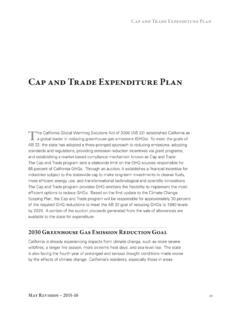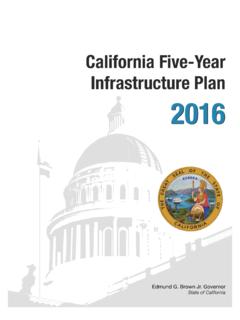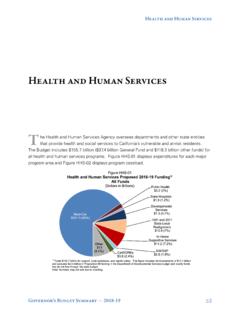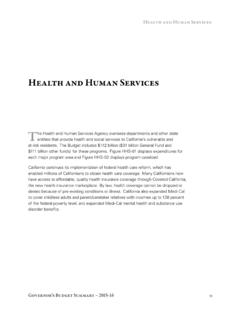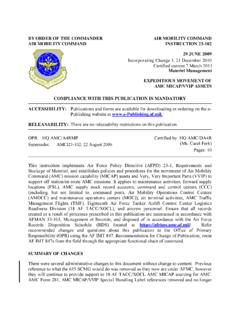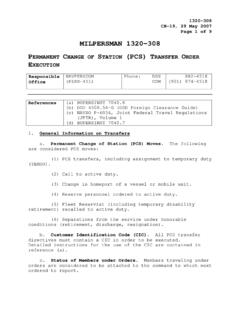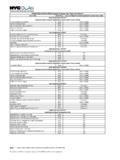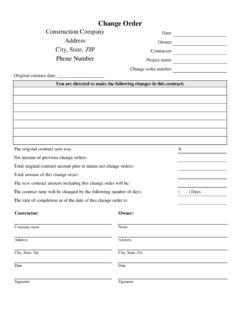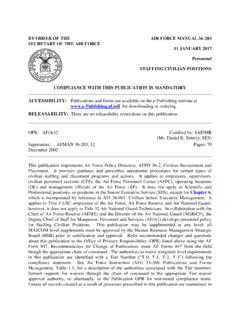Transcription of Cˆ˜ıˇÓ˚ C¯ˇÙ˘˚ - California
1 HDsjD82tKrgA. Climate change Climate change C alifornians are now experiencing first-hand the damaging effects of climate change . In the past year, extreme weather events affected every part of the state. These events devastated communities in Northern and Southern California , presenting new challenges and strengthening the state's resolve to combat climate change and design resilient communities. In 2017, California emerged from an historic five-year drought with the wettest winter season in history. The summer months saw the highest average temperatures in California 's recorded history, and the 2017 fire season stretched into January 2018, with communities in Northern and Southern California experiencing significant loss of life and property damage from catastrophic wildfires.
2 Mudslides followed, creating an unexpected new hardship for already stressed communities. There is no question that climate change is here. The need for action is clear. The Administration and the Legislature have many accomplishments that chart the course to a low-carbon future for California . Last July, Governor Brown signed landmark legislation extending and improving the state's Cap and Trade program and establishing a groundbreaking program to measure and combat air pollution at the neighborhood level. In recent years, the Governor has signed legislation establishing ambitious and enforceable greenhouse gas (GHG). emission reduction targets; setting the nation's toughest restrictions on short-lived climate pollutants; directing Cap and Trade funds to GHG-reducing programs that benefit disadvantaged communities, support clean transportation and protect natural ecosystems; and requiring the state to generate half of its electricity from renewable sources by 2030 and double the rate of energy efficiency savings in buildings.
3 1. Climate change hDsjD82tKrgA. The state's climate programs span all sectors industrial, electricity, transportation, and natural and working lands. The Renewables Portfolio Standard, Low Carbon Fuel Standard, Cap and Trade Program, Advanced Clean Cars program, Short Lived Climate Pollutant Reduction Strategy, Sustainable Freight Action Plan, and the developing Natural and Working Lands Implementation Plan all serve as models for partners throughout the United States and the world. Throughout the implementation of these programs, the state's population and economy have continued to grow, yet GHG emissions have decreased and per capita electricity consumption remains flat. Climate change Initiatives In its last year, the Administration is proposing four initiatives to solidify the path to deeper GHG.
4 Emission reductions and a $ billion Cap and Trade Expenditure Plan. Zero-Emission Vehicle Investment Initiative The transportation sector is responsible for 50 percent of the state's greenhouse gases and 80. percent of smog-forming oxides of nitrogen that contribute to the state's air quality challenges. To meet climate goals and clean air standards, California must dramatically reduce transportation sector pollution. The Administration has a multi-pronged effort to reduce emissions from the transportation sector, including investing $ billion over the next five years to expand transit around the state. The state is also making major investments in bike and pedestrian transportation and is building the nation's first high-speed rail system. However, more needs to be done to reduce emissions from the over 25 million passenger vehicles on California roads.
5 In 2012, the Governor issued Executive Order B-16-12 directing state agencies to accelerate the market for ZEVs in California . The Executive Order calls for million ZEVs in California by 2025. In 2016, the Air Resources Board released its Mobile Source Strategy, which lays out a roadmap for complying with GHG targets and federal air quality standards that includes million ZEVs by 2030 combined with significant, continued improvements in conventional vehicle efficiency. The Air Board administers the Clean Vehicle Rebate Project, a program that provides $5,000 for hydrogen electric, $2,500 for battery electric, and $1,500 for plug-in hybrid electric vehicles, and an additional $2,000 for low income drivers. With these rebates, California 's ZEV market has grown significantly.
6 The number of zero-emission passenger vehicles on the road in California expanded from approximately 25,000 in 2012 to over 350,000 now, more than any other state and about half of all the ZEVs nationwide. Over 40 ZEV models are on the market for California 2. hDsjD82tKrgA. Climate change consumers, compared to 5 at the start of 2012, with models now including mini-vans and SUVs. In 2017, ZEVs accounted for about 5 percent of all new car sales in California . Charging infrastructure for ZEVs continues to be one of the greatest barriers to adopting the technology among consumers and the automotive industry. California currently has approximately 14,000 public chargers and 31 hydrogen refueling stations. California 's existing ZEV infrastructure growth has been supported by the California Energy Commission's Alternative and Renewable Fuel and Vehicle Technology Program, which provides grants totaling $40 million per year.
7 California 's ZEV charging infrastructure is also supported by the Public Utilities Commission's proceeding to direct investments of investor-owned utilities, as well as investment by Volkswagen required by a 2016 settlement agreement. Additionally, innovative private investors are developing emerging charging and hydrogen re-fueling infrastructure technologies and the private market is growing. But these existing funds are not enough to promote the adoption of ZEV vehicles needed to meet the state's goals. The Administration is proposing a new eight-year initiative to accelerate sales of zero-emission vehicles through vehicle rebates and infrastructure investments, and the Governor is issuing Executive Order B-48-18, setting a new ZEV target of 5 million ZEVs in California by 2030.
8 The new ZEV initiative will provide a total of $ billion over eight years and, when combined with private investment, will meet and exceed the goal of million ZEVs on California 's roadways by 2025, and provide a solid foundation for getting to the Governor's goal of 5 million ZEVs by 2030. Expanding Alternative Fuel Infrastructure $235 million for the Energy Commission to accelerate investments in the statewide network of hydrogen and electric charging stations. This proposal represents a five-fold increase in state infrastructure investments for the budget year, and at least tripling the current level for the next seven years. This proposal will be supported by existing funds available from the Alternative and Renewable Fuel and Vehicle Technology Program and one-time funds from the expiring New Solar Homes Partnership Program (set to sunset on June 1, 2018), and provides a multi-year funding plan to invest $900 million for ZEV infrastructure through 2025.
9 Continuing Clean Vehicle Rebates $200 million of Cap and Trade funding for the Air Board to provide rebates to California residents for the purchase or lease of new light-duty zero-emission vehicles and plug-in hybrids, including $25 million for incentives for low-income consumers. This proposal will provide $200 million annually through 2025, reflecting the state's commitment to achieve its ZEV target. As the number of ZEVs purchased increases over time, the Air Board will revise the program's income eligibility 3. Climate change hDsjD82tKrgA. requirements to target moderate and low-income consumers that are most influenced by the availability of the rebates. California is an important market in the world for proving and scaling ZEVs, and is well positioned to benefit from the expected transition to these vehicles.
10 These state infrastructure funds will attract and leverage private investment, including innovative planning and development of e-mobility options to ensure low income and disadvantaged communities are included in the ZEV transition. It will also encourage emerging market opportunities and support cutting-edge technologies that will continue to expand future investments in hydrogen and battery electric charging stations. California 's transition will lower fuel costs for drivers, improve public health, and take the state closer to its clean energy goals by reducing reliance on fossil fuels. Sequestration and Resilience Initiative The Administration is proposing a series of actions to increase carbon sequestration and storage and improve resilience. As climate change impacts become more common, climate science indicates that reducing the probability of the most severe climate change consequences will require a limitation of global temperature rise to at least 2 degrees Celsius, and efforts to limit the increase even further to degrees Celsius.
